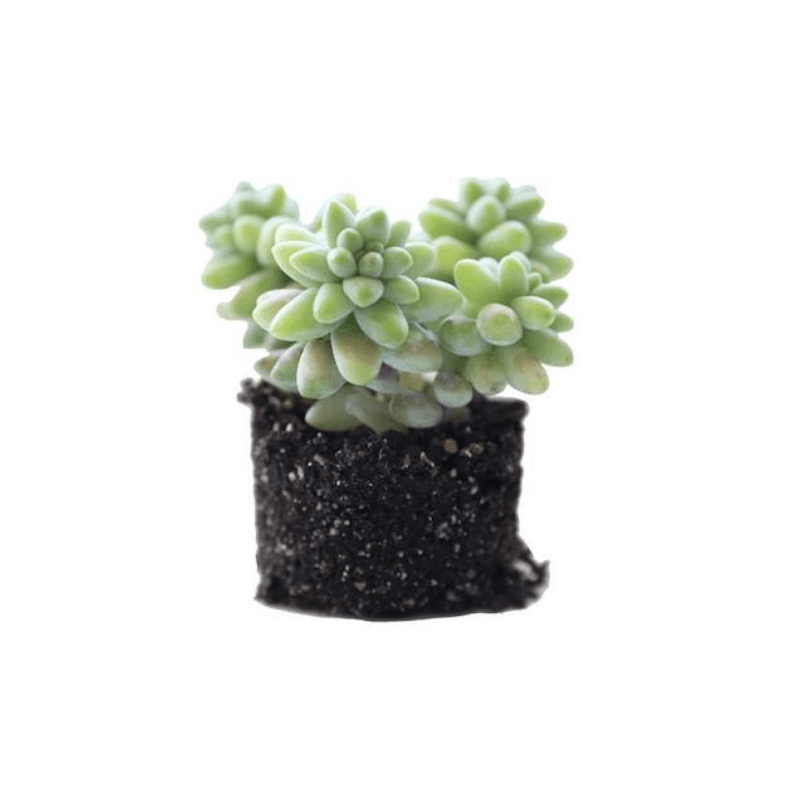

Burro's tail is a showstopper succulent in a hanging planter, with long, luxurious stems draping over the side. Take care not to jostle or over water Sedum morganianum to avoid leaf drop.
The burro’s tail was discovered by an American botanist growing near Veracruz in eastern Mexico in 1932, and its beautiful pendulous stems of quickly made the succulent a favorite among US houseplant collectors.
If you live in a warm climate (USDA growing zones 9 to 11), consider Sedum morganianum a garden plant and use in a container or near the edge of a wall where its stems can drape over the edge. If it’s happy, burro’s tail will grow stems as long as two feet and will bloom periodically (flower color can range from red to white to yellow).
A member of the hardy, easy-to-grow Sedum family, burro’s tail (which also goes by the moniker donkey’s tail) will be happy in bright, indirect light, requires well-drained soil, and will react badly if you water it too much. If you want to grow it as a houseplant, see more tips in Succulents: 8 Tips to Help Your Favorite Indoor Plants Survive.
For another of our favorite succulents with draping foliage, see String of Pearls: A Field Guide to Planting, Care & Design.
v5.0
When you register as a free Member of the Remodelista family of websites (Remodelista, Gardenista, and The Organized Home), you gain access to all current posts plus 10 archived posts per month, our internal bookmarking tool, and the community bulletin board.
Member benefits include:
For $5/month ($59.99 paid annually) you'll enjoy unlimited, ad-free access to Remodelista, Gardenista, and The Organized Home and all the benefits of Membership.
Subscriber benefits include:
For $5/month ($59.99 paid annually) you'll enjoy unlimited, ad-free access to Remodelista, Gardenista, and The Organized Home and all the benefits of Membership.
Subscriber benefits include:
Benefits include:
For $5/month ($59.99 paid annually) you'll enjoy unlimited, ad-free access to Remodelista, Gardenista, and The Organized Home and all the benefits of Membership.
Subscriber benefits include:
When you register as a free Member of the Remodelista family of websites (Remodelista, Gardenista, and The Organized Home), you gain access to all current posts plus 10 archived posts per month, our internal bookmarking tool, and the community bulletin board.
Member benefits include:
If at any time you want to become a Subscriber and enjoy unlimited, ad-free access to all our content, just go to the My Account link and choose Subscribe.
Advertising funds our work at Gardenista and helps us provide you with a daily dose of garden inspiration & design. We hope you’ll consider disabling your adblocker for Gardenista so we can continue our mission: a well-designed garden for all.
Thank you for your support.